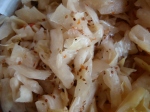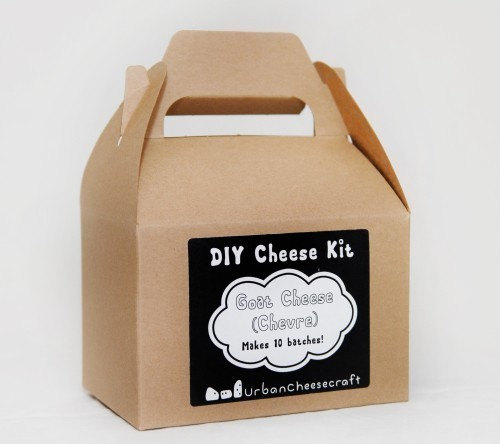Apartment Sauerkraut
APARTMENT SAUERKRAUT (I know, it’s not cheese but it’s preservation by fermentation- very related 🙂
I came up with this because all sauerkraut recipes I found as I researched called for at least 5 heads of cabbage and a 5 gallon bucket…with all the projects and a business that I run at once, I don’t have space! Nor do I want that much sauerkraut for two people.
As usual, the stuff I enjoy making is easy and foolproof. So, keep in mind that sauerkraut is one of the easiest of farm skills. The Pennsylvania dutch left it for the children to make, you CAN make it!
- jar of delicious kraut
- jarring up my creation for the fridge
- this is the early stage that I liked best, like tangy coleslaw! see those pepper flakes? yum!
- apt. kraut set up
Here’s my apt. kraut recipe:
1 small head of cabbage (green, red or mixed for fun color!)
2 tablespoons of salt (I used kosher flakes)
1 teaspoon celery seed, freshly ground black pepper and I LOVED red pepper flakes (you can try any dry herbs)
1 cylindrical gallon container (can be glass, ceramic or food grade plastic), I used the plastic cream cheese container you see in the picture, similar to a yogurt container but bigger
A small plate or what I used, a quart sized yogurt lid (this should fit snugly inside so that the cabbage on the edge doesn’t rot)
A weight or what I used, another cream cheese container filled with water (it has to fit inside the other- lid on)
Cheesecloth or hanky to keep out dust and bugs
Rubber band
Okay, shred your cabbage or cut finely. Mix it with the herbs and salt by tossing it all in a large bowl. Now scoop in by the handful and push down between scoops. At the end you want to really tamp it down with your fist or a tool like a potato smasher. Now place the plate/lid inside on top of your cabbage. Follow with the weight/heavy container.
The idea is that the pressure and salt will draw out the cabbage’s liquid. The salty brine will preserve your cabbage and keep it from rotting until lacto-fermentation starts- you’re preserving! Congratulations! Along the way you are making live food (micro-organisms, much like live yogurt cultures) that is good for you! Check out Wild Fermentations by Sandor Katz if you want to learn more about this.
Wait, you’re not done yet! Cover your contraption with the cloth, then rubber band it. Push down on the weight every two hours that day, you should get a brine within a couple of hours. The cabbage must be covered in it to prevent rotting. If you have some dry old cabbage on your hands, just make a salty solution and cover the cabbage to help it along.
Keep pushing down morning, noon and night (I do it when I wake up, after I get home and before I go to bed) for two more days. Once you know that you have a nice and juicy concoction, leave it for at least 2 weeks. You can start testing for taste (look for a tang) and skimming any pink “scum” or even mold off the top. It should be just fine below that layer (all the recipes warn about this but I have never had it happen). Trust your senses, does it smell bad, off, rotten? A slightly gassy cabbage smell and/or pickle smell is ok.
As far as how long you wait, I like the early crunchy stages, others think true krauts are translucent and very soft. It’s all about your taste. Sauerkraut was created so that cabbage could last almost an entire year so you have some wiggle room! I jarred (just a jar with a lid, no canning skills needed) and refrigerated at several stages just to try. You can do this too, and it’s nice to keep some of the previous batch to mix in as a starter with the next batch- it gets a head start!
This recipe made 3 medium sized jars, plenty for us! Oh, your place can smell a little “gassy” while you make this. It’s cabbage, what do you expect?! I either get used to it or it lessens as the ferment ages. ps. I’ve tasted friends’ delicious krauts that included garlic, daikon radish, ginger, and even juniper berries, have fun experimenting!





I LOVE URBAN CHEESECRAFT!!!